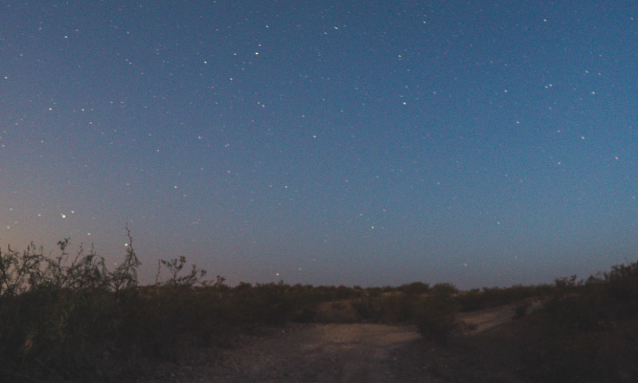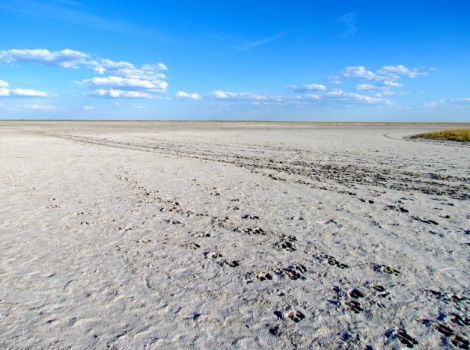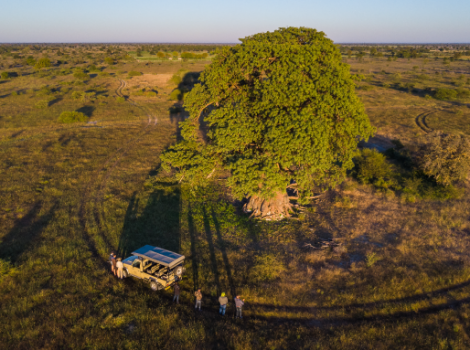
As day turns to night over the Kalahari Desert in remote Botswana, the dark blue-black sky becomes the scene of bright stars dancing freely, without the hindrance of light pollution that hides them when looking up from a city or town.
The ability to easily “count the stars in one of the darkest spots on the planet”, is why National Geographic listed the Kalahari Desert or !Ae!Hai Kalahari Heritage Park as one of the best destinations to visit this year. It is one of a few International Dark Sky Sanctuaries in the world, as there is almost no light, sound pollution and cloud cover over the park for most of the year.
The Kalahari scores almost 21.9 on the sky quality meter of darkness. As 22 represents zero light and thus is the highest possible score, it is easy to see why the Kalahari captures the minds of casual stargazers and professional astronomers the world over. Along with the Southern Cross, you are treated to other spectacular constellations in this remote wilderness in the Southern Hemisphere.
This three-step insider’s guide will make sure you have the ultimate stargazing experience in the Kalahari Desert:
1. Visit in the dry season
From around April to October, and particularly during Botswana’s winter months, rain showers are few and far between, which means the sky is clear and the stars are at their brightest.
Even though the dry season signals the busiest time for safaris across most of Botswana, the combination of the Kalahari’s vastness and it not being considered a traditional wildlife destination, means you will be off the beaten track without the hubbub of other tourists. Perhaps the perfect place for your first holiday of the decade?
2. Stay in desert luxury
When you aren’t looking up at the night sky, you will want to experience Botswana’s famous hospitality and luxury in a relaxed setting such as that felt at Nata Lodge in the Makgadikgadi Salt Pans.
These salt pans are found in the heart of the Kalahari Desert’s northern region and Nata Lodge blends seamlessly into this surrounding landscape of desert sand, salt pans and vast grass plains dotted by palm islands. The lodge caters for all travelling styles with 22 thatched chalets and 10 Meru tents (both types are en-suite) built on raised wooden platforms as well as a camping site.
3. Meet the feathered residents
Starry nights aside, the Nata Sanctuary in the Makgadikgadi Salt Pans is a birder’s delight. The helmeted guinea fowl, crested francolin, yellow hornbill, pied and arrow-marked babblers, glossy starling, Meyers parrot and paradise whydah can all be spotted around Nata Lodge.
The annual flooding of Nata Sanctuary by the Nata River brings thousands of migratory pelicans and flamingos that use this watery playground as one of just a few important breeding sites in Africa. This happens in the summer months, so if you want to combine stargazing with really incredible birding, you might have some cloudy nights. This is nevertheless a good way to see both of the major draw cards of the Makgadikgadi and Kalahari Desert.
Source: An Insider’s Guide to Stargazing in the Kalahari Desert



